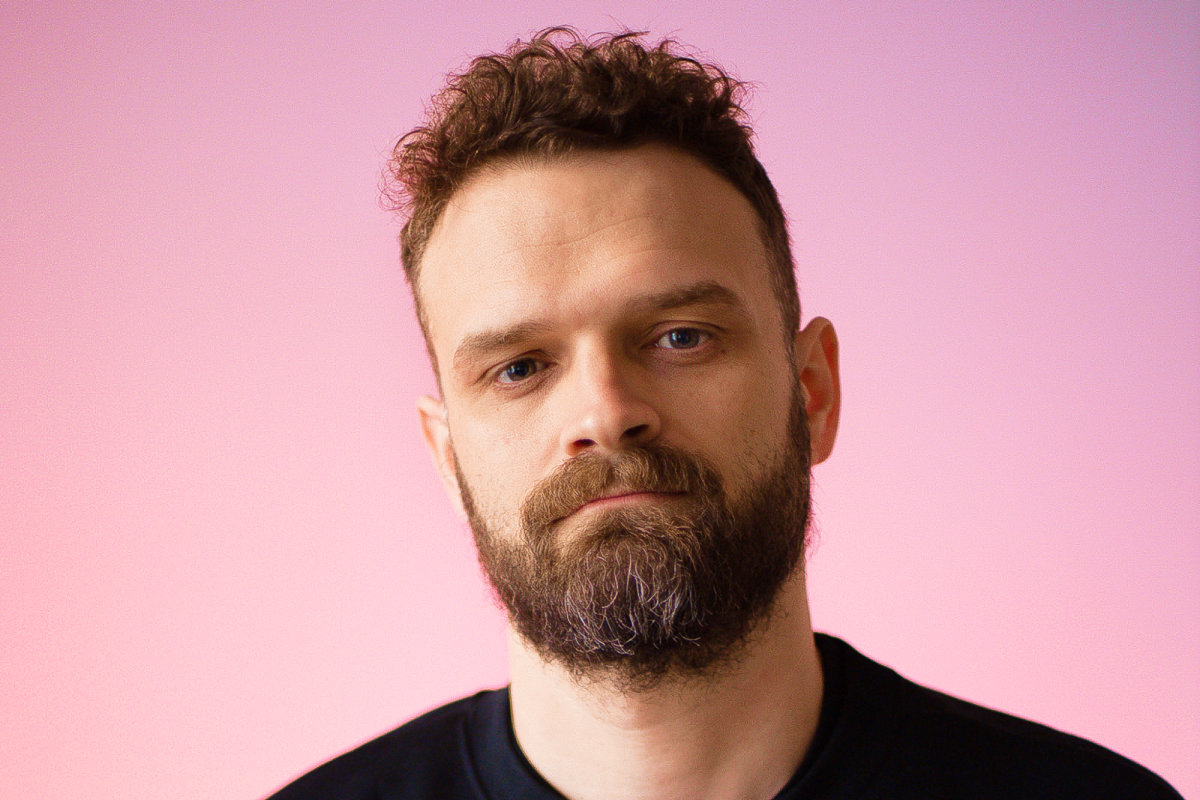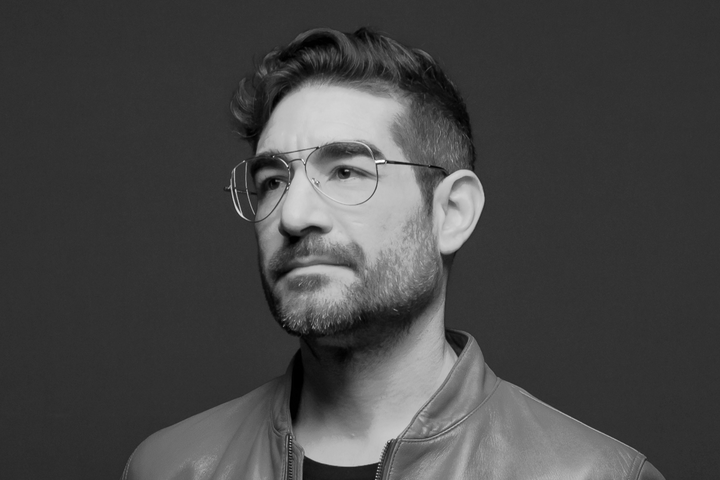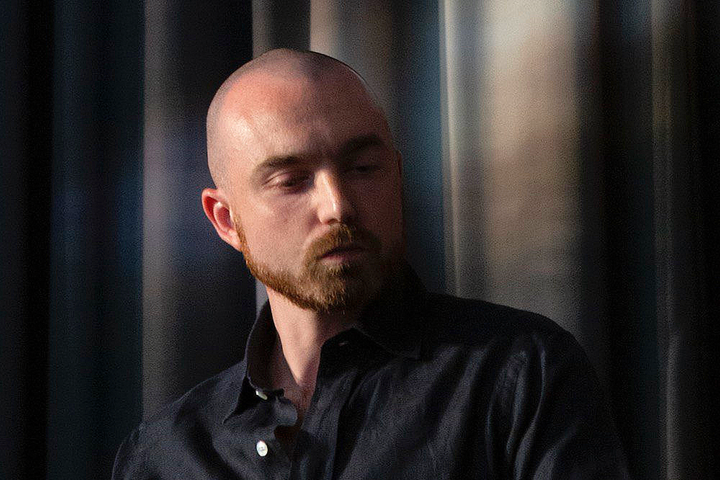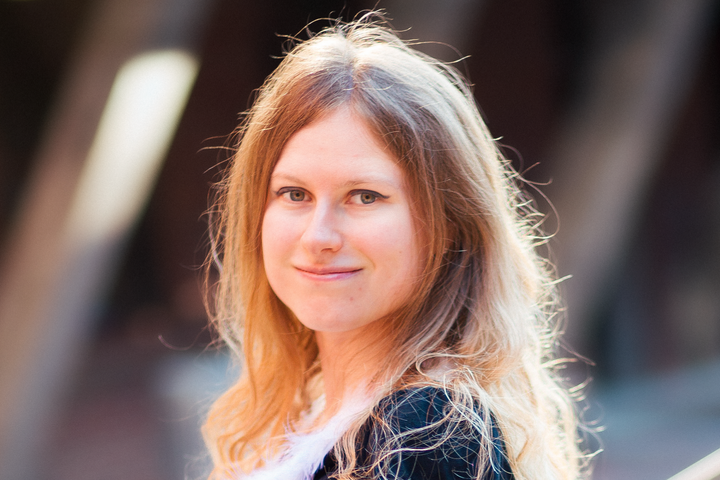Jacek Sosnowski on Venice Biennale, Polish Pavilion and Data

Jacek Sosnowski is a curator-psychoanalysist based in Warsaw where he runs curatorial practice PRPGND (formerly Galeria Propaganda), curator of Polish Pavilion at 18th Architecture Biennale of La Biennale di Venezia, co-organizer of Warsaw Gallery Weekend. Besides organizing 100+ shows in his own space, he worked with multiple public and private institutions, developing shows, public art projects and art-branding strategies. In his curatorial practice he explores ways of unknowing, unlearning and experience of nonlinguistic communication. He is a member of Sinthome – Lacanian School of Psychoanalysis.
What is your background and what brought you to the art world?
I identify as a curator-psychoanalyst. That's a very specific position but it works for me and describes my practice better than just a curator. My path to that was long as I was born into an art-world family, but also I was connected with arts, and culture through most of my professional life. In this I assumed various positions as a curator, producer, publisher and gallerist but now I mostly focus on development of new models for art production and distribution at my own curatorial practice.
As a curator of The Polish pavilion at the Biennale di Venezia - could you tell us more about the pavilion and the piece you are presenting, namely "Datament"?
Datamant is a word that describes the notion of omnipresence of data in our everyday life. Data by its very nature, and computational characteristics are very different from how humans perceive and experience the world. We show that in the form of architectural sculpture made out of two materials - global data on housing and digital society, and powder coated metal. Visitors can experience data in a form of juxtaposed lifesize wireframe models of statistical homes for four different levels of data density in the world. The experience of something so intangible as statistical data is turned into a bodily experience. We aren't visualizing data, we are embodying them in the form of architecture.
Why did you specifically decide to focus on the subject of data?
Mutual intuition of me, artist Anna Barlik and architect Marcin Strzała brought us to the point that we knew the role of various forms of data and information in everyday life is something that we wanted to tackle. Everyeach of us approached it from a different angle, different perspective and different emotion. In the end we mostly focused on how much we do not know about the world and how data ain’t helping. I think we are in a very crucial moment when everyone thinks that we know what we are talking about when it comes to topics of AI, metaverse, machine learning, NFT’s etc. and the truth is opposite, the sense of understanding is just an illusion.
As a curator, how would you describe the difference between curation for traditional and digital art?
First and foremost I would distinguish between curating and exhibition making. Regarding the latter I don’t see much difference, and have been showing digital art my whole career. In terms of curating I see that it becomes quite obvious that all art is now considered to have a digital presence. To work with it and around it requires certain intent and will always come from the point of deliberate decision why not to distribute the work in more or less diditased form. What I am trying to say is that for me the ontology of art was somehow always in the realm of this discourse of abstract ideas, and digitalisation makes it only more apparent. Maybe it sounds very Platonic but in its essence I strongly believe that most of the art is in the eye of the beholder not in the nature of the medium.
Why is curation especially important for Digital and Web3 Art?
It all comes down to the notions of ease of access, overproduction, and perception bandwidth. The last one is the most crucial in my opinion, and ways of creating situations for digital art where the viewers have capacity to focus is the most challenging task. Today we see that the digital world curates itself with unconscious algorithms, that are not only not-self aware, but also very, very much perverted in how they value things in the world. So to be less cryptic I would say that curation in the digital art, art platforms and exhibitions is essential for the art to exist at all and not be just a pseudo random fact among other search results.
How would you describe the main trends and tendencies in contemporary/digital art today?
Unknown. We can see things that appear as trends but trends within what. The media sphere of the digital world is so big no one has capacity to even claim in good faith that they see a substantial fraction of it. We can only trust shared experiences that we can have a proof for. That again comes to the curating, as that is a tool to facilitate such experiences.
How do you see the future of digital art? What technologies will be impacting it and how will it be different from today?
I wish for the world of technology to go to places where digital art remains as easy to maintain as drawing, or painting or sculpture. When the artworks can reside somewhere and be discovered by accident. When I go to someone's home, or visit a gallery, a collection I can stumble upon something that through, again, curating is there to be discovered at its own time and place. It is just there to be what it is. I can’t do that with someone's phone, computer or digital wallet. Space, time and mindset are essential.



